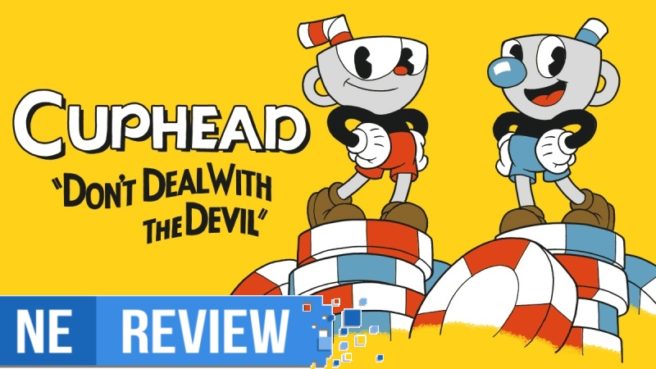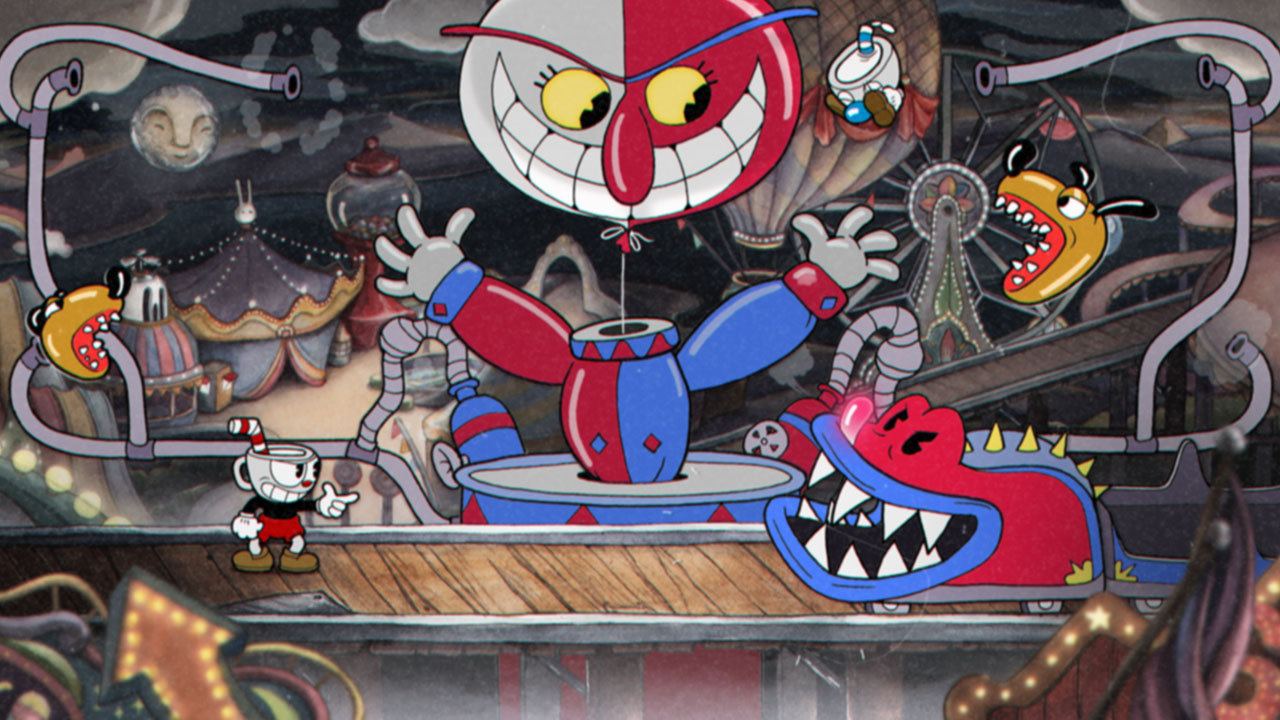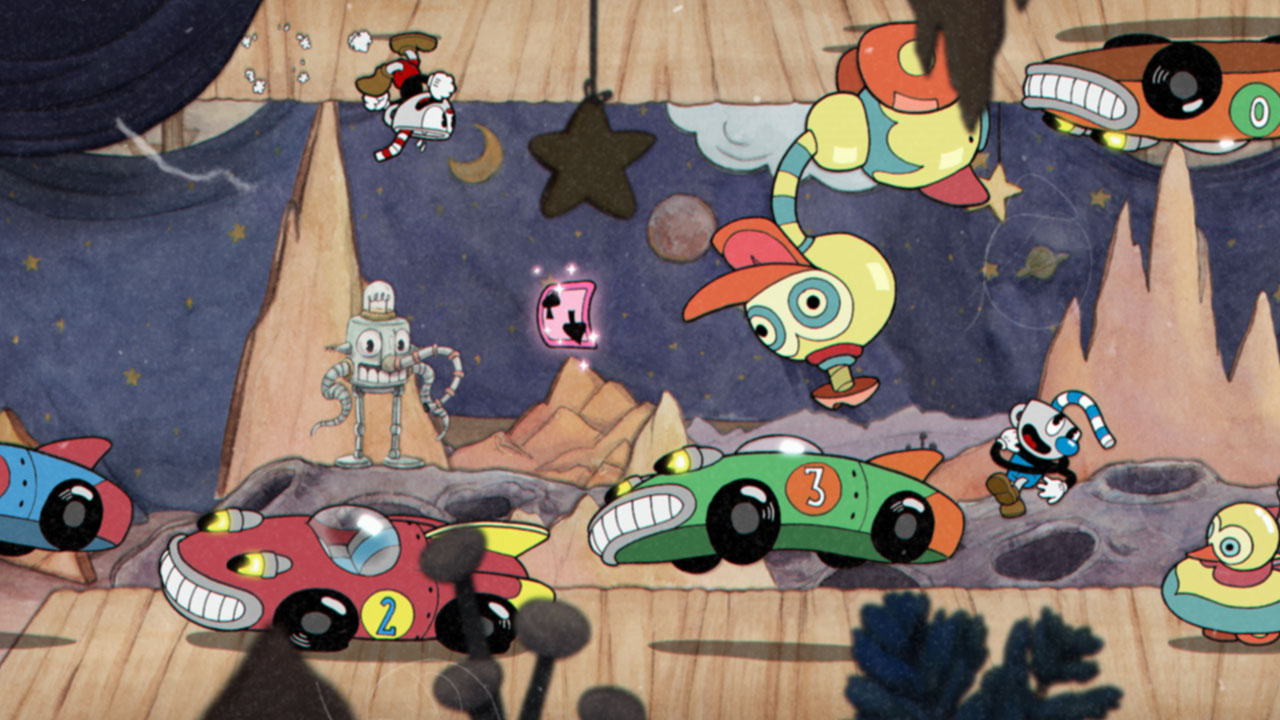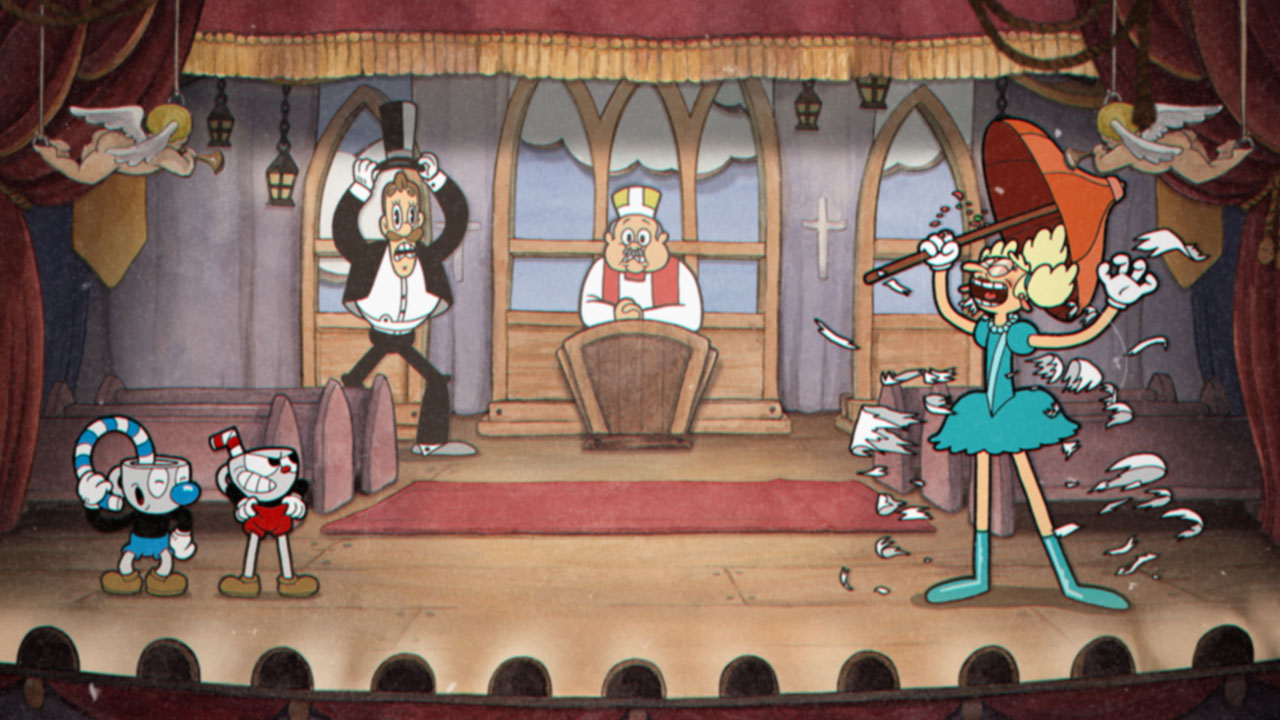[Review] Cuphead
System: Switch
Release date: April 18, 2019
Developer: Studio MDHR
Publisher: Studio MDHR
Back in 2014, the world was first introduced to a peculiar game known as Cuphead that had an aesthetic thought to be long forgotten, but presented itself with such panache that it was as compelling as it was unique and eye-catching. Its 1930s art direction oddly made you excited to watch the next episode to a show that didn’t exist, and the game was able to hit the right notes with so many people from so many generations. Now Cuphead has been given a chance to shine once again thanks to its new release on Switch.
The story of Cuphead is simple but is enough to give the player a reason for doing what it is they’re doing. Cuphead and Mugman get a little too overzealous while gambling and, while they could leave on a high note, Cuphead goes against Mugman’s request to roll again for all the money in the casino after being taunted by King Dice, the casino’s owner, and the Devil himself, and finds the roll being a loss thanks to a snake eyes. Since part of this deal also included taking Cuphead and Mugman’s souls if they were to lose, they beg for mercy, but the Devil makes another proposition: if they can get the soul contracts from those that have run away from the Devil after making deals with them and not living up to their end, Cuphead and Mugman could keep theirs.
Cuphead offers a unique take on side-scrolling platformer gameplay by implementing a run-and-gun approach, meaning you have to continue moving, shooting, and maintaining your momentum to avoid certain death; almost like a more hardcore version of Sonic. As someone who’s grown up with all kinds of sidescrollers from Mario to Contra, Metal Slug to Shantae and beyond, I fell into the Cuphead craze and found its difficult yet rewarding trial-and-error style to its gameplay addicting. The overall presentation is also without a doubt in a league of its own. The game is great to play, to watch, and to experience. Every victory feels substantial and each boss is as memorable as the next, coming in all different sizes and presentations and being just as important to the game as Cuphead himself.
Cuphead makes it no secret that it’s very much inspired by the cartoons of the 1930s. From the cover art to the moment you’re in the main menu about to select start, you’re greeted with big band and swing reminiscent of the prohibition era and a simpler time where there was song and dance, propaganda posters, Silva Thins, and an obsession with art deco typography.
During the game, players will find themselves going through Inkwell Isles, mostly taking down bosses in a ruthless exhibition of precision platforming, timing, and parries as they collect the contracts from each victory. Some levels won’t focus on bosses and instead are the true run-and-gun sidescrollers. While these aren’t particularly easy either with a wide array of unique enemies all with their own special attributes, the bosses are the true focus and shine of what makes Cuphead so great. I’ve seen the standard sidescrolling levels as more of a way to “relax” when you find yourself stuck on a boss but still want to proceed in some capacity.
The boss fights are so fantastic and grueling that, while they have a pattern to their phases and attacks, each one is immensely rewarding once you’ve learned how each boss treats the space around them. A lot of the time Cuphead never really feels unfair, as its bosses are so clever in their design it’s more so on you to do your best to avoid and attack. Whenever I died I never felt like it was due to any odd mechanic or poor design – I knew it was my fault and I was aware of it. Not utilizing the space around you, even if it may not seem like there’s much to work with, can cause certain death. The only boss to this day, for some reason, that really make me rip my hair out even more so than King Dice and the Devil himself, is the carnival boss.
Depending on your playstyle and how you approach certain scenarios, players can use coins they find throughout the non-boss levels and exchange them for power ups and abilities at shops. These can range anywhere from more health, new kinds of projectiles and specials, and other properties like being able to automatically jump on pink objects (these give you an instant refill on one of your gauges for special moves if you can parry these) and immunity while dashing. There are lots of different ways to tailor the game to your style and make survival a little more feasible, but all of these come with their own caveats too. You may be able to acquire more health, but at the loss of attack power. You may have a new attack or special that can do massive damage, but has such a long cooldown it makes it hard to defend yourself after each move. Each has a set range as well, from short to mid to long, that could go either way depending on how you play or the stages you’re using them on. You could, in theory, find a setup that works best for you and run through the game that way, but with bosses and levels all being so unique from each other, each and every power up you gain and use will have its advantages and disadvantages, bringing in another layer of skill optimization to use within the game. I can’t stress enough how inherently smart Cuphead is in regards to its progression and teaching the player how to better themselves through sheer persistence.
I’m happy to let everyone know that nothing has changed for Cuphead on Switch, bringing the authenticity back for the game as well as my hair loss. The game feels so natural and flawless on the system you would have expected it to be part of Nintendo’s own lineup long ago. I do feel that the best way to play is with the Pro Controller, as the Joy-Con can cause some discomfort and accuracy issues with the size and lack of a proper d-pad given the intense nature of Cuphead, but it remains enjoyable nonetheless. Cuphead hitting number one on the eShop long before release and still sitting there at the time of this review shows the appeal and precedent Cuphead has set for game design and its respective genre.
The Verdict
Cuphead (and Mugman) making its debut on Switch coming from being an Xbox console exclusive is so fitting and comfortable that you would think they’ve been here all along. Studio MDHR’s 1930s-inspired platformer was a hit when it released back in 2017 and has remained a constant point of conversation whenever platformers and difficulty are brought up thanks to the game’s unique approach to design and art direction that makes it stand out and label it as one of the best in the medium, and now everyone on Nintendo’s hybrid platform can experience this at home or on the go as they see for themselves why it’s been critically acclaimed. Handheld mode does great for this run-and-gun shooter and loses no audio or visual fidelity whatsoever. While Cuphead is a port by definition, it’s so natural, authentic, and shows no signs of difference from its Xbox counterpart that it isn’t Cuphead to Switch or for Switch, but Cuphead is simply now – on – Switch.
Cuphead review copy provided by Studio MDHR for the purposes of this review.




